By Dan Weisz
In another city park at another fruited palm tree, wintering birds continue to dine. Rather than American Robins in this park there was a small flock of Cedar Waxwings. Cedar Waxwings are beautiful birds that winter in Tucson annually. During their winter stay, they feast on a variety of fruits and berries. Wherever the food is, you may find Cedar Waxwings. If you do find them, enjoy!!
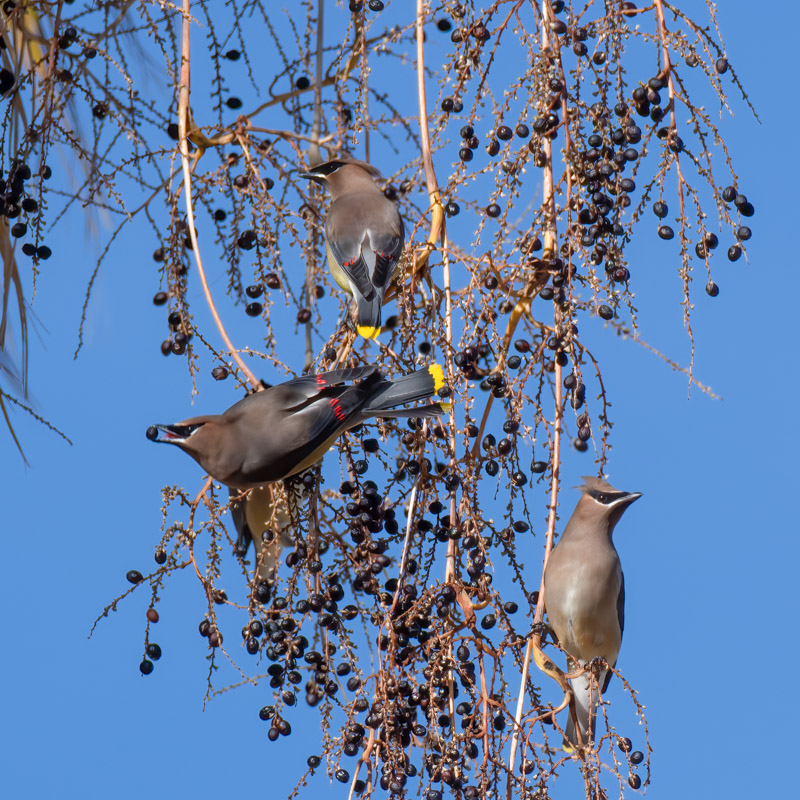
The photos show the Cedar Waxwings in all of their beauty. The photo above shows two birds with the red “wax” wingtips that they are known for and are named after. Their porcelain looking feathers are set off by a black mask outlined in white. Their tails are tipped in bright yellow and the birds have a brown crest on their head.
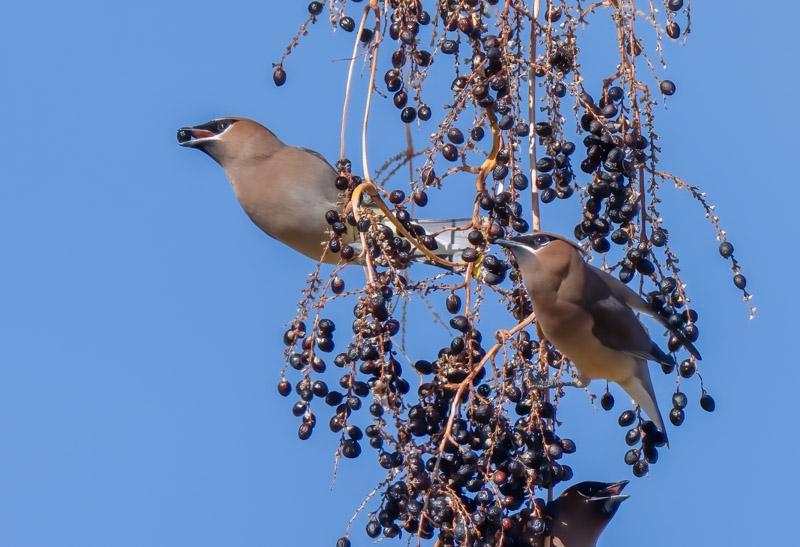
The range map shows how widespread Cedar Waxwings are. They live year-round in the upper half of the United States and breed far north into Canada. During winter, many of the Cedar Waxwings travel south and can be found throughout the entire United States.
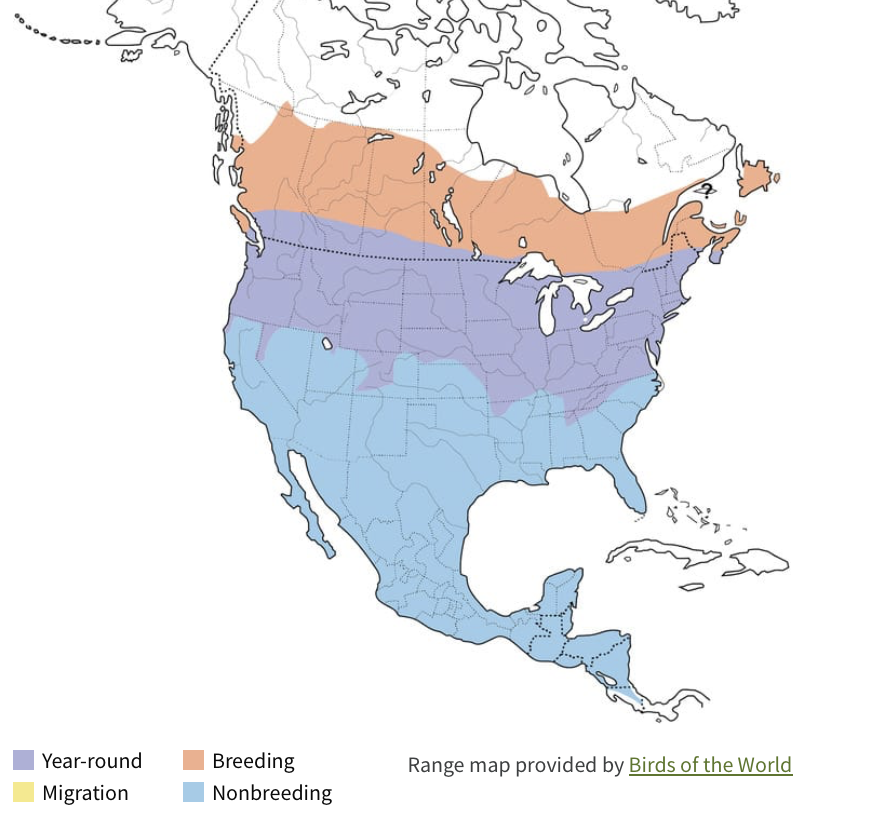
Notice that the Cedar Waxwing below does not have red tips on its wings? Most young Cedar Waxwings do not develop red wing-tips, but some do. The number of red wing-tips that a Cedar Waxwing has is variable. In older Cedar Waxwings, the waxy tips may break off. So it is difficult to ‘age’ a Cedar Waxwing by the red wing-tips, and since both sexes of these birds may have red wing-tips, those features do not indicate gender.
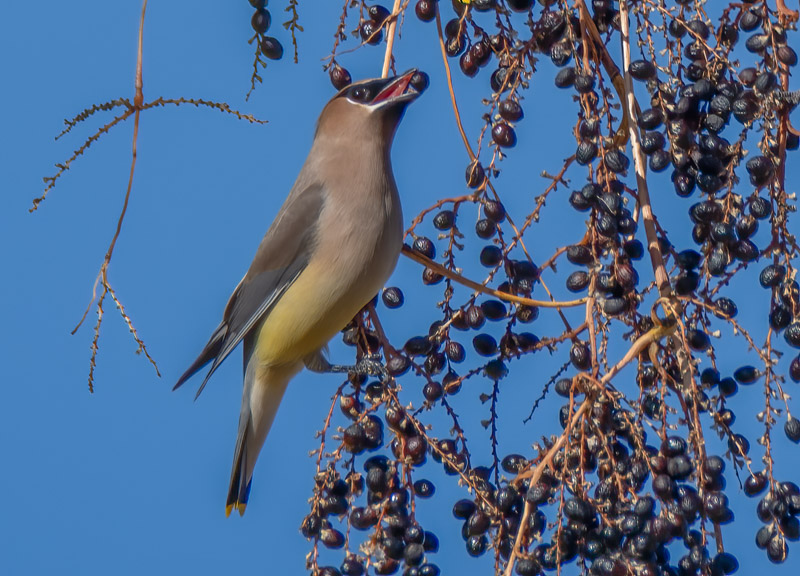
One thing that ornithologists believe about those red tips though is that in general, the older the bird is, the more red wing-tips they are likely to have and the larger the wing-tips might be. So perhaps those red wing-tips, as a plumage enhancement, indicate age, maturity, and some kind of social status. That would make a Cedar Waxwing with more red wing-tips more attractive as mates.
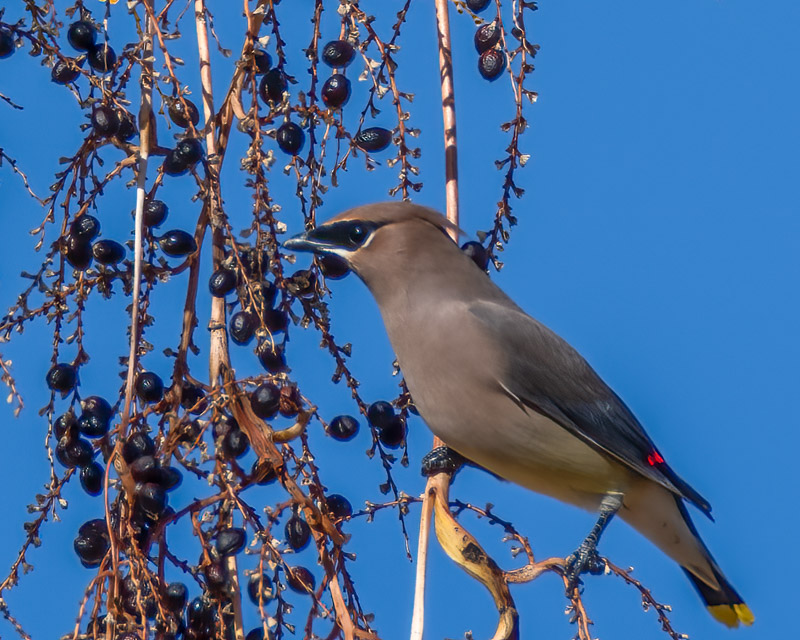
So many berries to choose from. The small flock of Cedar Waxwings would swarm to the palm tree, spend a while eating berries, and then all flush from the palm tree and fly to another corner of the park to perch and rest in a different tree. In this case, they would fly to a fir tree in the corner of the park. After several minutes, they would all fly back to the berry clusters in the palm tree and dine once more.
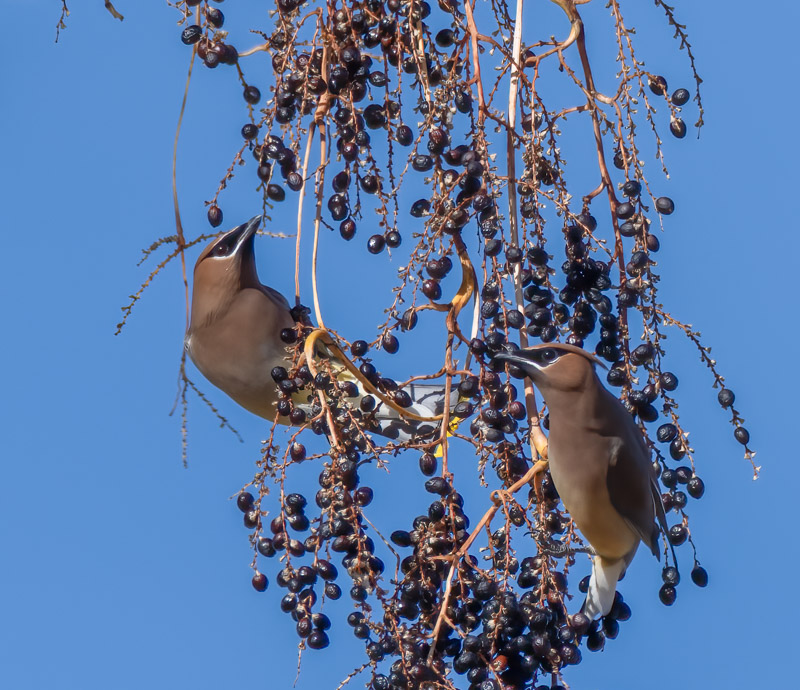
Usually, a Cedar Waxwing could swallow a berry as they picked it. Sometimes, they would toss it into the air to better position the berry for consumption.
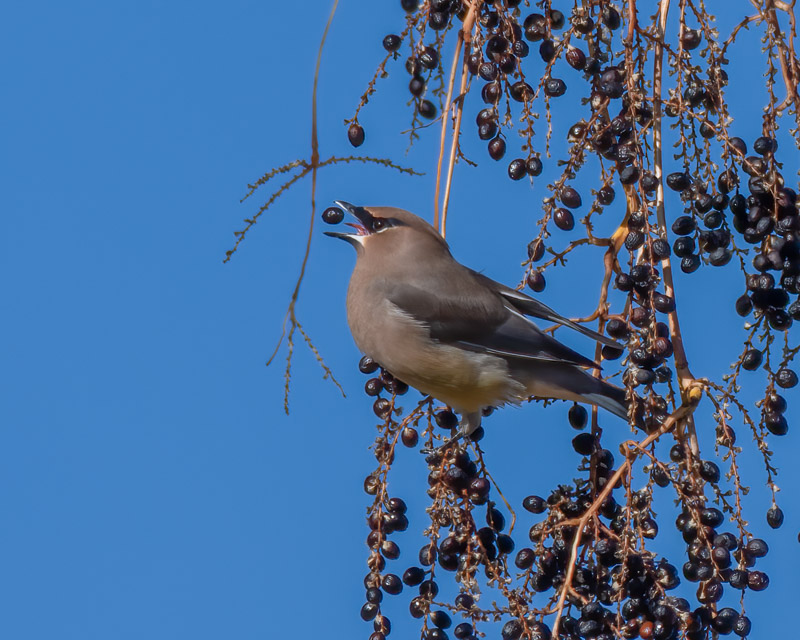
Nice catch. Then the swallow happens. Birdnote tells us a bit more about Cedar Waxwings: https://www.birdnote.org/listen/shows/cedar-waxwings-sleek-and-handsome
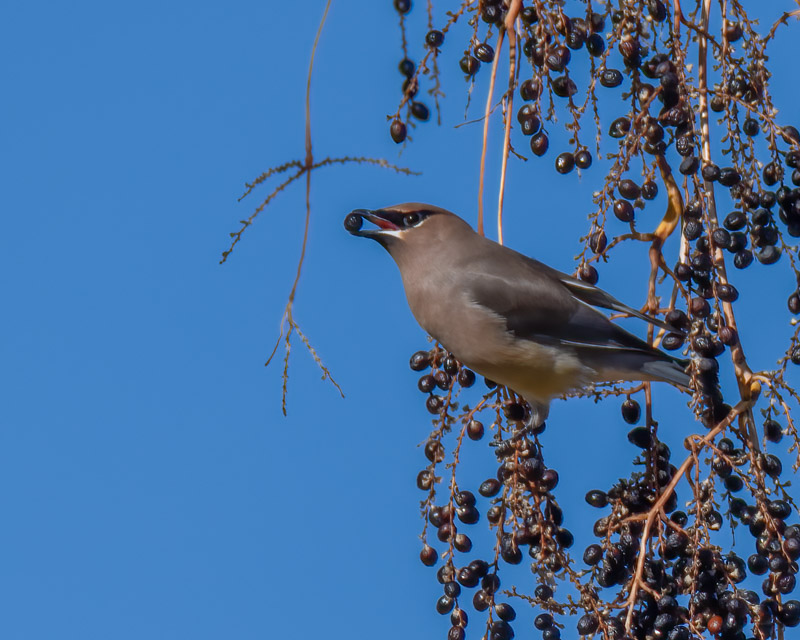
This Cedar Waxwing was perched horizontally on the berry branches. I like how the bird contorts its body to maintain its position and I also like seeing the red tips on its wings. Rather than take off from this position, the bird turned downward to grab a berry.
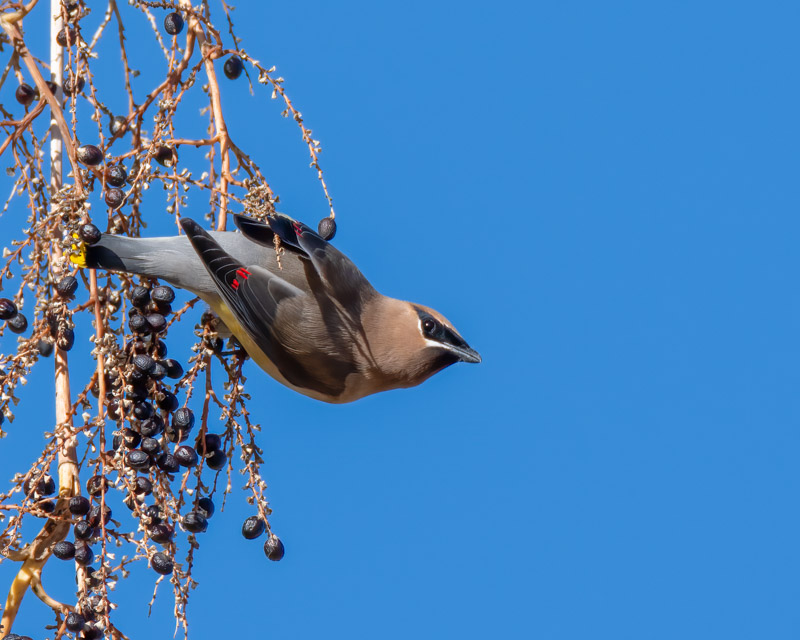
Although the Cedar Waxwing’s head is in shadows, I like the erect stance of this bird and the smooth look of its feathers.
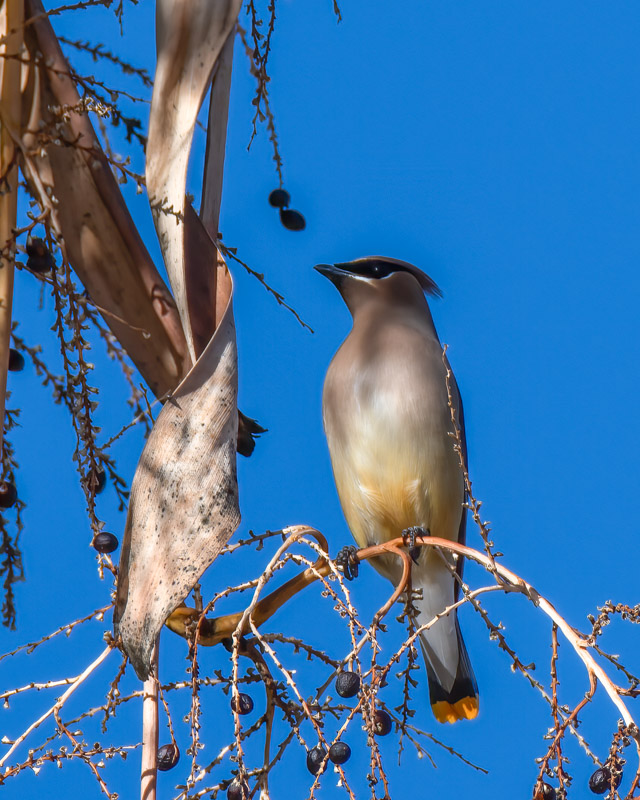
The park had a few other birds around. Western Bluebirds never seemed to land in the palm tree but would fly over and perch in a bare tree next to the palm. The Bluebirds would fly to the ground to glean fallen berries from the grass on the ground. Here one Bluebird has just swallowed a berry. You can see the bulge in its throat.
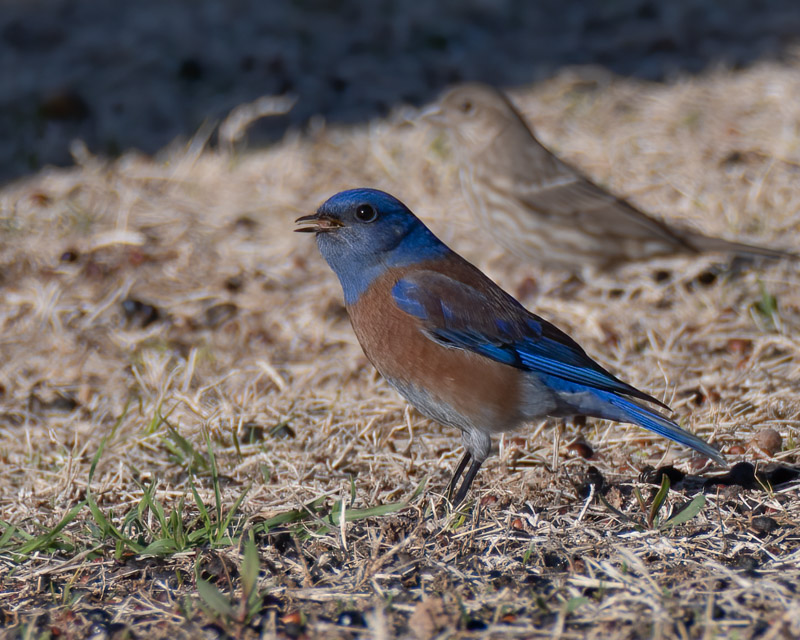
Another Western Bluebird hopped next to the base of the palm tree in search of food.
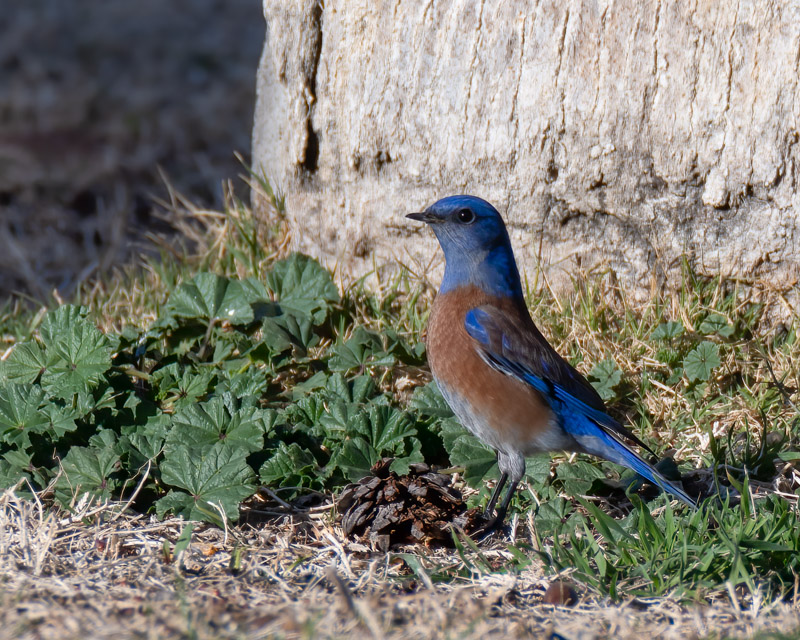
I saw all of these birds at La Madera Park in Tucson, but almost any city park is likely to have Western Bluebirds this winter. And any city park with palm trees just may be a place where you can find Cedar Waxwings. Who knows, you may also find American Robins dining on the bounty of fruit too.
